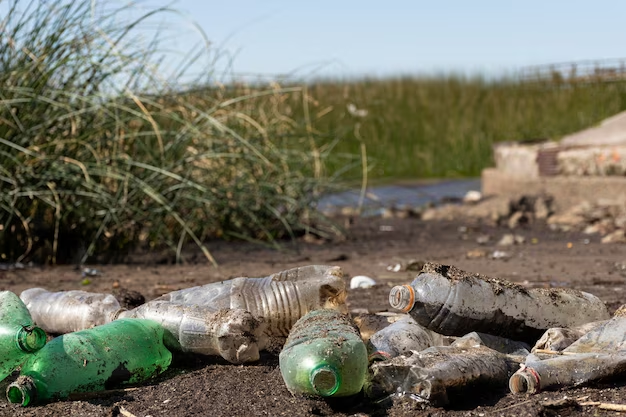Anniston, Alabama, a city with a rich history and diverse culture, has recently garnered attention for a less favorable reason: its reputation as a dangerous place. This article delves into the various aspects that contribute to this perception, exploring the factors that make Anniston a topic of concern and interest for residents and outsiders alike. By examining crime rates, environmental issues, and socio-economic challenges, we aim to provide a detailed understanding of why Anniston, Alabama is so often labeled as dangerous.
Crime Rates in Anniston

One of the most straightforward reasons behind the question, “Why is Anniston, Alabama so dangerous?” lies in its crime rates. Statistics show that Anniston has higher crime rates compared to both the national and state averages.
Violent Crime in Anniston
Anniston’s violent crime rate is significantly higher than the national average. According to NeighborhoodScout, the chance of becoming a victim of violent crime in Anniston is 1 in 120, with a violent crime rate of 8.36 incidents per 1,000 residents. This rate is considerably higher than the national average, which stands at 4 incidents per 1,000 residents.
Property Crime in Anniston
Property crime in Anniston also exceeds the national average. NeighborhoodScout reports a property crime rate of 54 per 1,000 residents, indicating that the chance of becoming a victim of property crime is 1 in 18. This rate is substantially higher than the national average of 20 incidents per 1,000 residents.
Homicide, Rape, and Larceny Rates
- Homicide: Interestingly, Anniston’s homicide rate is reported as 0.0 per 100,000, which is -100.0% lower than both the state and national averages.
- Rape: Similarly, the rape crime rate in Anniston is reported as 0.0 per 100,000, significantly lower than state and national averages.
- Larceny: The larceny crime rate in Anniston is 230.41 per 100,000, which is -89.36% lower than the state average and -87.04% less problematic compared to the national average.
Burglary and Motor Vehicle Theft
- Burglary: Anniston’s burglary crime rate is 691.24 per 100,000, slightly lower (-8.23%) than the state average but 43.19% more prevalent compared to the national average.
- Motor Vehicle Theft: Anniston has one of the highest rates of motor vehicle theft in the nation according to NeighborhoodScout’s analysis.
Crime Statistics Table
| Crime Type | Anniston Rate (per 100,000) | Alabama Average (per 100,000) | National Average (per 100,000) |
| Violent Crime | 836 | 409 (approx.) | 400 |
| Property Crime | 5,439 | 2,006 (approx.) | 2,000 |
| Homicide | 0.0 | 8.22 | 5.42 |
| Rape | 0.0 | 47.15 | 62.61 |
| Larceny | 230.41 | 2,164.54 | 1,778.41 |
| Burglary | 691.24 | 753.24 | 482.75 |
| Motor Vehicle Theft | Not specified | Not specified | Not specified |
Note: The data represented here is based on the latest available statistics and may vary from actual current statistics.
Environmental Concerns

When discussing why Anniston, Alabama is so dangerous, it is crucial to consider environmental factors. The city has a history of industrial pollution, which has led to long-term health and safety concerns.
PCB Contamination
Anniston’s most significant environmental issue is its history of PCB contamination. Polychlorinated biphenyls (PCBs) are toxic chemicals that were once widely used in industrial applications. In Anniston, PCBs were released into the environment by the Monsanto Company, a major local industry. These chemicals have contaminated the soil, water, and air, leading to serious health and environmental repercussions.
Table: PCB Contamination Levels in Anniston
| Contaminant | Concentration (ppm) | Affected Area |
| PCBs in Soil | High levels | Widespread contamination |
| PCBs in Water | Elevated levels | Local water bodies affected |
| Airborne PCBs | Present | Pervasive in some areas |
PCBs are known carcinogens and can cause various health issues, including cancer, developmental problems, and immune system disorders. The contamination in Anniston has led to long-term health concerns for its residents.
Air and Water Quality
Anniston also faces ongoing concerns related to air and water quality, which further compound its environmental challenges. The pollution from PCBs and other industrial activities has contributed to poor air quality, affecting respiratory health. Additionally, local water bodies have been contaminated, raising concerns about safe drinking water and aquatic ecosystems.
Table: Key Air and Water Quality Issues
| Environmental Factor | Description |
| Air Pollution | Industrial emissions and PCBs affect air quality, increasing respiratory problems. |
| Water Contamination | PCBs and other pollutants contaminate local water sources, posing health risks. |
These environmental concerns have a direct impact on the well-being and safety of Anniston’s residents.
Socio-Economic Challenges
Moving on to socio-economic factors, Anniston’s dangerous reputation is also influenced by its economic struggles:
Poverty
High poverty rates in Anniston contribute significantly to the city’s crime rates and reduced quality of life. Poverty often correlates with higher crime rates as individuals may resort to illegal activities due to economic hardships.
Table: Poverty Statistics in Anniston
| Indicator | Anniston Rates (%) |
| Poverty Rate | Above 20% |
| Child Poverty Rate | Even higher |
| Income Inequality | Pronounced |
The prevalence of poverty in Anniston underscores the need for comprehensive social and economic reforms.
Unemployment
Another socio-economic challenge in Anniston is higher-than-average unemployment rates. The lack of job opportunities can lead to increased crime and social unrest, as individuals struggle to support themselves and their families.
Table: Unemployment Rates in Anniston
| Indicator | Anniston Rates (%) |
| Unemployment Rate | Above State Average |
| Youth Unemployment | Alarming Levels |
Addressing unemployment is crucial for improving the city’s safety and overall quality of life.
Education
Lower levels of educational attainment in Anniston are associated with various social challenges. A less-educated population may face limited employment prospects and reduced access to resources, perpetuating a cycle of poverty and crime.
Table: Education Levels in Anniston
| Educational Indicator | Anniston Rates (%) |
| High School Graduates | Below State Average |
| College Graduates | Lower Than Average |
Improving educational opportunities is vital for breaking the socio-economic barriers that contribute to Anniston’s dangerous reputation.
Anniston’s Efforts to Improve Safety
Despite the issues, it’s important to recognize the efforts being made to address why Anniston, Alabama is so dangerous.
Community Policing
Community policing has emerged as a vital strategy to reduce crime and build trust between law enforcement agencies and the community they serve. Anniston has implemented several community policing initiatives aimed at improving safety and fostering positive relationships with its residents.
- Neighborhood Watch Programs: Anniston has established neighborhood watch programs, encouraging residents to actively participate in crime prevention efforts. These programs promote community engagement and facilitate timely reporting of suspicious activities.
- Police Community Engagement: Law enforcement agencies in Anniston engage in regular community meetings and outreach programs. This approach allows residents to voice their concerns, share information, and collaborate with the police on addressing safety issues.
- Training and De-Escalation Techniques: Anniston’s police force undergoes specialized training in de-escalation techniques and community-oriented policing. This helps ensure that interactions between law enforcement officers and the public are respectful and non-violent.
These community policing efforts are aimed at building a safer and more connected Anniston.
Environmental Cleanup
Anniston’s PCB contamination has been a long-standing issue, but significant strides are being taken to address this environmental challenge and improve overall environmental health.
- Remediation Projects: The city is actively involved in remediation projects aimed at cleaning up PCB-contaminated areas. These projects involve the removal and proper disposal of contaminated soil and water, with the goal of reducing health risks.
- Monitoring and Regulation: Environmental agencies closely monitor air and water quality in Anniston, ensuring that pollution levels are within acceptable limits. Strict regulations and penalties are in place to hold industries accountable for their environmental impact.
- Public Awareness: Public awareness campaigns educate residents about the importance of environmental conservation and responsible waste disposal. These campaigns encourage individuals and businesses to play an active role in reducing pollution.
Anniston’s commitment to environmental cleanup is gradually mitigating the long-term effects of PCB contamination and contributing to a healthier living environment.
Economic Development
To revitalize the city and reduce socio-economic challenges, Anniston has implemented various economic development programs.
- Job Creation: The city actively supports initiatives that aim to create jobs, particularly in sectors like manufacturing, technology, and small business development. By boosting employment opportunities, Anniston seeks to alleviate unemployment-related issues.
- Business Incentives: Anniston offers incentives to attract businesses to the area. This includes tax incentives, grants, and support for entrepreneurs. These incentives encourage investment and economic growth.
- Infrastructure Investment: Investing in infrastructure projects, such as road improvements and public transportation, not only enhances the city’s appeal to businesses but also improves overall quality of life for residents.
These economic development efforts are vital for strengthening Anniston’s economy and reducing the socio-economic challenges that contribute to its dangerous reputation.
Conclusion
The question of why Anniston, Alabama is so dangerous cannot be answered simply. It’s a complex issue involving various factors like crime, environmental challenges, and socio-economic conditions. Understanding these elements is crucial to addressing the problems and improving the city’s overall safety and quality of life.
Anniston’s story is not just about danger; it’s also about resilience and the ongoing efforts to create a safer, healthier community. By acknowledging the issues and working towards solutions, Anniston can change its narrative and alter the perception of being a dangerous city.
FAQ
Why is Anniston, Alabama considered dangerous?
Anniston’s high crime rates, environmental issues, and socio-economic challenges contribute to its dangerous reputation.
What is being done to improve safety in Anniston?
Efforts like community policing, environmental cleanup, and economic development initiatives are ongoing to enhance safety and quality of life in Anniston.
Are certain areas of Anniston more dangerous than others?
Yes, like many cities, Anniston has areas with higher crime rates. However, it’s important to consider that safety can vary from neighborhood to neighborhood.
Is it safe to visit Anniston?
While Anniston does have safety concerns, many visitors enjoy their time in the city without incident. It’s always advisable to stay informed and take standard safety precautions.
How does the crime rate in Anniston compare to other Alabama cities?
Anniston’s crime rate is higher than many other cities in Alabama, contributing to its reputation as a dangerous place.



